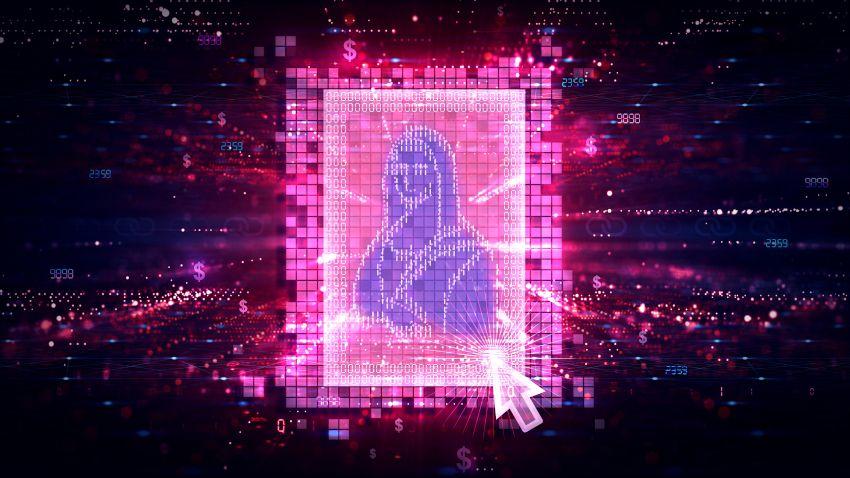Published May 8, 2023

Nonfungible tokens (NFTs) have exploded in popularity this year, but the hype surrounding them is quickly dissipating.
Nevertheless, digital artists and creators worldwide continue to use NFTs to monetize their work with minimal investment, transforming the digital art space.
However, the legal implications surrounding NFTs present challenges, particularly when it comes to navigating the blurred lines between artistic expression, plagiarism, and trademark infringement.
Regulations surrounding cryptocurrencies and digital collectibles are still in flux, leaving both artists and investors uncertain about the future of this exciting new market.
IP Infringement in the News
A recent high-profile lawsuit between luxury retailer Hermes and NFT creator Mason Rothschild brought critical intellectual property issues surrounding NFTs to the forefront.
In the case, Hermes alleged that Rothschild's "MetaBirkins" NFT collection, which featured digital depictions of fur-covered bags resembling Hermes' iconic Birkin bags, infringed on their trademark rights.
After a week-long trial, a nine-member jury agreed with Hermes' claims, finding Rothschild liable for trademark infringement, trademark dilution, and cybersquatting. The court awarded Hermes $133,000 in damages, signaling that NFT creators must be mindful of intellectual property laws even for digital assets in this rapidly emerging space.
The implications of this verdict are sure to reverberate across the NFT community and could influence how companies approach enforcement of trademark rights in Web3.
The lengthy legal dispute highlighted the necessity for digital creators and major companies to establish distinct boundaries between original works and protected brands. Without such delineation, both sides risk damaging legal and financial consequences until regulations explicitly catch up to evolving technologies and cultural practices.
For consumers, a commitment to transparency is equally vital to shield them from fraudulent schemes seeking to exploit a lack of clarity.
By proactively addressing intellectual property in the digital age, all parties can harness the benefits of innovation while mitigating the risks of infringement.
Further Cases of IP Infringement
NFT analytics firm bitsCrunch has uncovered yet another potential case of intellectual property infringement within the burgeoning NFT space.
According to bitsCrunch's analysis, the popular Coodles NFT collection appears to have appropriated McDonald's recognizable logo and branding without authorization. Nearly 5% of the Coodles NFT series features an attribute called "McCoodles" which depicts the McDonald's logo on virtual hoodies.
If confirmed, this discovery would mark another troubling instance of IP misuse that underscores the legal uncertainties and risks pervading the NFT market.
The revelation comes amid growing concerns about copyright and trademark safeguards as NFTs continue their meteoric rise in popularity and value.
The McDonald's-themed Coodles NFT collection has seen impressive growth and adoption since launching.
In under two months, nearly 400 unique owners have amassed over 400 of the 8,888 available NFTs, driving over $500,000 in total trading volume. With a floor price of 0.0059 ETH, the collection has transacted more than 3,300 ETH on OpenSea's secondary market, highlighting the power of brand collaborations and nostalgia-driven projects in the NFT space.
According to a recent court ruling in the Hermes vs. Rothschild case, intellectual property rights do not supersede consumer protections from misleading marketing practices. The ruling clarifies that even prominent artists, critics, and commentators must not create branded content that confuses the origin or ownership of creative works.
This ruling has implications for brands seeking influencer marketing partnerships as well. For example, there are no public announcements of any formal collaboration between McDonald's and Coodles, a popular lifestyle influencer, despite Coodles recently publishing a series of Instagram posts featuring McDonald's products.
As the sixth most valuable brand globally and fifth most valuable in the U.S. with a brand value of nearly $200 billion as of 2022 according to Kantar, McDonald's influencer marketing campaigns are closely followed.
The lack of disclosed partnership here suggests that influencers must be transparent about the commercial nature of such posts to avoid misleading consumers or risk legal complications.
Detecting IP Infringement in NFTs
The MetaBirkins NFT collection delisting by OpenSea, Rarible, and Zora in response to the Hermes vs. Rothschild case highlights the intellectual property risks associated with NFTs.
As the popularity of NFTs grows, brands must monitor marketplaces for unauthorized usage of their logos or other intellectual property.
Investors should also conduct due diligence to ensure the NFTs they purchase do not infringe on existing IP rights.
To help address this issue, companies like BitsCrunch are developing APIs and other tools to detect IP infringements in NFT collections. By leveraging these types of technologies, brands and investors alike can work to promote a more legitimate NFT market that respects intellectual property.
Through advanced AI technology, this API monitors emerging NFT marketplaces to detect intellectual property infringement and counterfeit digital assets.
By analyzing NFT collections for usage of registered brand names or identities without proper authorization, the API helps protect consumers from potentially fraudulent investments and scams.
Identifying illegitimate or fake NFTs that illegally appropriate brand trademarks, logos, or other protected materials, and enable brands to enforce their intellectual property rights even in new digital domains like NFT marketplaces.
Protecting the NFT Ecosystem
The emerging NFT market has seen rapid growth and adoption in comparison to cryptocurrencies, which have had over a decade to reach their current level of popularity.
This fast-paced development brings exciting opportunities as well as complex challenges, such as the unauthorized sale of brand names and products as virtual goods or NFTs in the Metaverse.
As brands explore ways to leverage the Metaverse and its virtual marketplace, critical questions surrounding intellectual property in this new frontier have come to the forefront.
How do traditional intellectual property rights apply—or not apply—to products and brands in virtual spaces? What proactive measures can brands take to safeguard their intellectual property in the Metaverse?
The answers to these questions will be instrumental in shaping best practices for brands to effectively and safely participate in this burgeoning new marketplace.
The bitsCrunch team is committed to protecting brands and consumers in the nascent NFT marketplace.
Through proactive monitoring and detection of illicit activity, ongoing collaboration with relevant stakeholders, and continued enhancement of our industry-leading analytics capabilities, bitsCrunch seeks to help curb counterfeiting, fraud, and other malicious behaviors that threaten to undermine trust in this emerging digital economy.
By working to create a more transparent, secure, and trusted NFT ecosystem, bitsCrunch aims to enable mainstream adoption and support sustainable growth in this space.
More Tips and Tricks to Avoid IP Infringement
To avoid IP infringements in the NFT space, here are some tips:
-
Create original content: The best way to avoid IP infringements is to create your own original content. Don’t use other people’s copyrighted materials or intellectual property without their permission. Instead, create your own unique artwork, music, or other digital creations that you can tokenize and sell as NFTs.
-
**Obtain permission: **If you want to use someone else’s intellectual property or copyrighted materials, make sure to obtain permission first. This can be done by contacting the owner and asking for a license or permission to use their work. You may need to pay for the license or obtain a written agreement that outlines the terms of the use.
-
Use public domain content: Public domain content is not subject to copyright restrictions, so it can be freely used by anyone. When creating NFTs, consider using public domain content such as old photographs, artwork, or music that is no longer under copyright protection.
-
Perform due diligence: Before creating or selling an NFT, perform due diligence to ensure that the content is original and does not infringe on anyone else’s intellectual property rights. You can use tools such as reverse image searches or plagiarism checkers to ensure that your content is unique.
-
Consider copyright ownership: If you are creating an NFT based on someone else’s work, consider who owns the copyright. If the work was created as part of a contract or employment, the copyright may be owned by the employer or client. Be sure to obtain permission or a license from the copyright owner before using the work to create an NFT.
By following these tips, you can minimize the risk of IP infringements in the NFT space and ensure that your NFTs are original and legally sound.
Want more tips? Stay on top of the latest by signing up for the BlockSpan NFT API newsletter and join our growing and knowledgeable community Discord.



